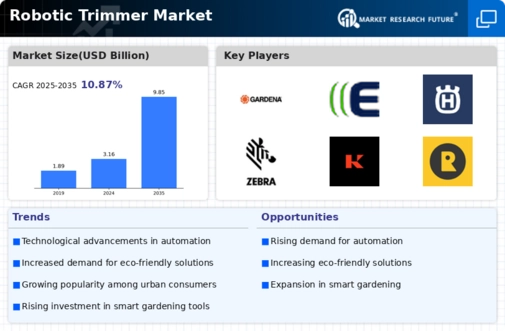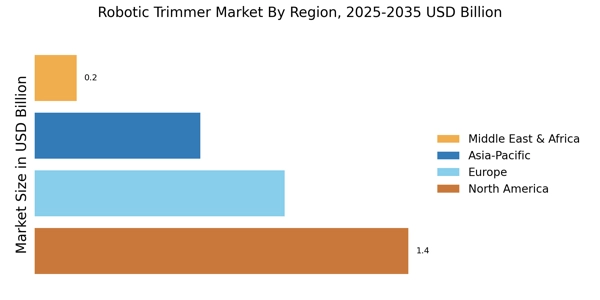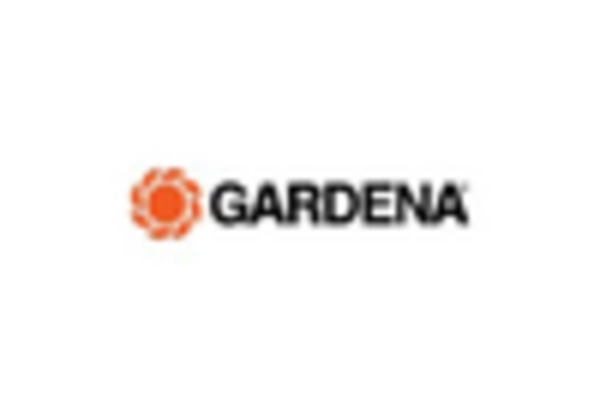Urbanization and Space Constraints
Urbanization is reshaping the landscape of the Robotic Trimmer Market. As more individuals move to urban areas, the demand for compact and efficient gardening solutions is increasing. Many urban dwellers have limited outdoor space, making traditional lawn care methods less feasible. Robotic trimmers, designed for small to medium-sized lawns, are becoming increasingly popular among city residents. Market analysis suggests that the urban gardening segment is expected to grow by 20% over the next few years, as consumers seek convenient and effective ways to maintain their green spaces in densely populated areas.
Technological Advancements in Automation
The Robotic Trimmer Market is experiencing a surge in technological advancements that enhance automation capabilities. Innovations in artificial intelligence and machine learning are enabling robotic trimmers to operate with greater precision and efficiency. These advancements allow for improved navigation and obstacle detection, which are crucial for effective lawn maintenance. According to recent data, the integration of smart technologies is projected to increase the market share of robotic trimmers by approximately 25% over the next five years. As consumers increasingly seek automated solutions for their gardening needs, the demand for technologically advanced robotic trimmers is likely to rise, driving growth in the industry.
Increased Consumer Awareness and Adoption
Consumer awareness regarding the benefits of robotic trimmers is on the rise, significantly impacting the Robotic Trimmer Market. As more individuals become informed about the advantages of using robotic technology for lawn care, adoption rates are expected to increase. Educational campaigns and marketing efforts by manufacturers are playing a crucial role in this trend. Data suggests that consumer interest in robotic lawn care solutions has grown by 40% in recent years, indicating a shift in consumer preferences. This heightened awareness is likely to drive sales and expand the market for robotic trimmers in the near future.
Sustainability and Eco-Friendly Solutions
The growing emphasis on sustainability is significantly influencing the Robotic Trimmer Market. Consumers are becoming more environmentally conscious, leading to a preference for products that minimize carbon footprints. Robotic trimmers, which often utilize electric power and reduce the need for chemical fertilizers, align well with these eco-friendly values. Market data indicates that the demand for sustainable gardening solutions is expected to grow by 30% in the coming years. This shift towards greener alternatives is likely to propel the adoption of robotic trimmers, as they offer a practical solution for maintaining lawns while adhering to environmental standards.
Rising Labor Costs and Workforce Shortages
The Robotic Trimmer Market is also being driven by rising labor costs and workforce shortages in landscaping services. As labor becomes more expensive and harder to find, homeowners and businesses are turning to robotic solutions for lawn maintenance. Robotic trimmers offer a cost-effective alternative, allowing users to save on labor expenses while ensuring consistent lawn care. Recent statistics indicate that the landscaping industry has seen a 15% increase in labor costs over the past three years, prompting a shift towards automation. This trend is likely to continue, further boosting the demand for robotic trimmers.


















Leave a Comment